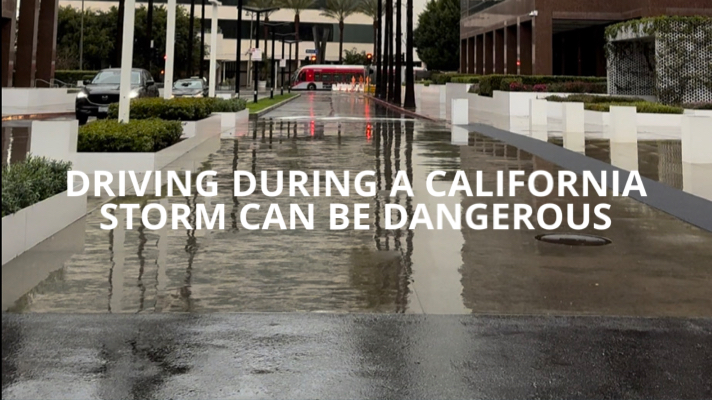Written By Chris Dolan and Breanna Martinez
As the heavy rain steadily falls upon California, drivers are understandably apprehensive about their safety in the flooding roads. The window of greatest danger while driving in the rain typically spans 10 to 20 minutes after the rainfall begins. The initial rain of the season does pose heightened risks. When vehicles are on the road, they release small amounts of oil from their engines and other parts. This oil doesn’t vanish; it remains on the road’s surface. As more cars travel the same routes, this oil steadily accumulates, creating a thin layer on the pavement. When rain begins to fall, the rainwater acts like a mixing agent, interacting with the accumulated oil and causing it to lift off the road surface. This mix of rain and accumulated oil creates a slick coating on the road, making it a slippery surface. This slickness reduces friction between a car’s tires and the road, decreasing traction. As a result, it is more challenging for a car’s tires to grip the road securely, potentially causing a vehicle to slide more easily across a roadway. While this is largely outside the driver’s control, there are several things that drivers can do to make themselves safer on the road, including:
- Staying Alert and Focused: Being awake, alert, and focused while driving is crucial. Avoid distractions, such as texting or using your phone, and ensure you’re well-rested before embarking on your journey. Fatigue or distractions can greatly impair reaction times and decision-making abilities.
- Adapting Speed for Weather Conditions: Adjust your driving speed according to the weather. Reduce your speed when it’s raining, as roads can become slippery due to the oil buildup and the wet surface. Maintain a safe and manageable speed considering the weather conditions, allowing enough time to react to unexpected situations.
- Ensuring the Vehicle is Well-Maintained: Regularly check your vehicle to ensure it’s in good working condition. Pay particular attention to your tires, ensuring they have adequate tread depth for better traction on wet roads. Properly inflated tires and well-maintained brakes are essential for maintaining control and adequate stopping distances in adverse weather conditions.
- Being Cautious When Changing Lanes or Merging: Before changing lanes or merging onto a highway, thoroughly check your blind spots and use your mirrors. Signal your intentions clearly to other drivers and ensure enough space to maneuver safely. Multiple checks and cautious actions significantly reduce the risk of collisions while changing lanes or merging.
- Maintaining Proper Visibility: Adequate visibility is crucial for safe driving, especially in adverse weather conditions. Check your wiper blades regularly to ensure they’re in good condition and effectively clear the windshield. Replace worn-out wiper blades promptly to maintain clear visibility during rain or snow. Keep the windshield washer fluid reservoir filled to ensure you can clean the windshield when needed.
While the dangers posed by rain-soaked roads are concerning, understanding the contributing factors empowers drivers to take proactive measures for safer journeys. Recognizing that the initial moments of rainfall present heightened risks due to the mixing of accumulated oil and water on road surfaces, drivers can prioritize certain precautions to mitigate these dangers.










